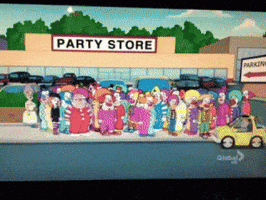Is there a federal law that requires insurers to pay for all approved vaccines?On local TV news tonight, they said insurers are only required to pay for vaccines on the CDC recommendation list. Removing this vaccine from the recommended list for children and healthy adults under 65 will make payment optional for insurers.
Navigation
Install the app
How to install the app on iOS
Follow along with the video below to see how to install our site as a web app on your home screen.
Note: This feature may not be available in some browsers.
More options
You are using an out of date browser. It may not display this or other websites correctly.
You should upgrade or use an alternative browser.
You should upgrade or use an alternative browser.
RFK Jr, HHs & Public Health News | Measles outbreak, etc.
- Thread starter nycfan
- Start date
- Replies: 865
- Views: 29K
- Politics
- Messages
- 2,574
I think ACA requires paying for those recommended Kennedy muddies the watersIs there a federal law that requires insurers to pay for all approved vaccines?
WaynetheDrain
Iconic Member
- Messages
- 1,232
Once they’re out of the womb, they are of no use to Republicans.Because we just DGAF about children.
- Messages
- 22,389
“Health Secretary Robert F. Kennedy Jr. says his “Make America Healthy Again” Commission report harnesses “gold-standard” science, citing more than 500 studies and other sources to back up its claims. Those citations, though, are rife with errors, from broken links to misstated conclusions.
Seven of the cited sources don’t appear to exist at all.
Epidemiologist Katherine Keyes is listed in the MAHA report as the first author of a study on anxiety in adolescents. When NOTUS reached out to her this week, she was surprised to hear of the citation. She does study mental health and substance use, she said. But she didn’t write the paper listed.
“The paper cited is not a real paper that I or my colleagues were involved with,” Keyes told NOTUS via email. “We’ve certainly done research on this topic, but did not publish a paper in JAMA Pediatrics on this topic with that co-author group, or with that title.”
It’s not clear that anyone wrote the study cited in the MAHA report. …”
——
Did they have AI draft their report and it imagined up studies to support their pre-ordained conclusions that no one bothered to check? Or is this just sloppy human work either by the RFK team or, as MAHA and MAGA frequently argue, remaining deep state HHS employees intentionally sabotaging the report with fake references?
- Messages
- 22,389
“Health Secretary Robert F. Kennedy Jr. says his “Make America Healthy Again” Commission report harnesses “gold-standard” science, citing more than 500 studies and other sources to back up its claims. Those citations, though, are rife with errors, from broken links to misstated conclusions.
Seven of the cited sources don’t appear to exist at all.
Epidemiologist Katherine Keyes is listed in the MAHA report as the first author of a study on anxiety in adolescents. When NOTUS reached out to her this week, she was surprised to hear of the citation. She does study mental health and substance use, she said. But she didn’t write the paper listed.
“The paper cited is not a real paper that I or my colleagues were involved with,” Keyes told NOTUS via email. “We’ve certainly done research on this topic, but did not publish a paper in JAMA Pediatrics on this topic with that co-author group, or with that title.”
It’s not clear that anyone wrote the study cited in the MAHA report. …”
——
Did they have AI draft their report and it imagined up studies to support their pre-ordained conclusions that no one bothered to check? Or is this just sloppy human work either by the RFK team or, as MAHA and MAGA frequently argue, remaining deep state HHS employees intentionally sabotaging the report with fake references?
“… The anxiety study wasn’t the only one the report cites that appears to be mysteriously absent from the scientific literature. A section describing the “corporate capture of media” highlights two studies that it says are “broadly illustrative” of how a rise in direct-to-consumer drug advertisements has led to more prescriptions being written for ADHD medications and antidepressants for kids.
The catch? Neither of those studies is anywhere to be found. Here are the two citations:
Shah, M. B., et al. (2008). Direct-to-consumer advertising and the rise in ADHD medication use among children. Pediatrics, 122(5), e1055- e1060.
Findling, R. L., et al. (2009). Direct-to-consumer advertising of psychotropic medications for youth: A growing concern. Journal of Child and Adolescent Psychopharmacology, 19(5), 487-492.
Those articles don’t appear in the table of contents for the journals listed in their citations. A spokesperson for Virginia Commonwealth University, where psychiatric researcher Robert L. Findling currently teaches, confirmed to NOTUS that he never authored such an article. The author of the first study doesn’t appear to be a real ADHD researcher at all — at least, not one with a Google Scholar profile.
In another section titled, “American Children are on Too Much Medicine – A Recent and Emerging Crisis,” the report claims that 25% to 40% of mild cases of asthma are overprescribed. But searching Google for the exact title of the paper it cites to back up that figure — “Overprescribing of oral corticosteroids for children with asthma” — leads to only one result: the MAHA report.
The corticosteroids study’s supposed first author, pediatric pulmonologist Harold J. Farber, denied writing it or ever working with the other listed authors. He pointed to similar research he’s conducted, but said that even if the MAHA report cited that study correctly, its conclusions are “clearly an overgeneralization” of the findings.…”
- Messages
- 22,389
“…
NOTUS also found serious issues with how the report interpreted some of the existing studies it cites.
In one section about mental health medication, which Kennedy has railed against for years, the report cites a review paper it claims shows that therapy alone is as or more effective than psychiatric medicine. But one of that paper’s statisticians told NOTUS that conclusion doesn’t make sense, given their study didn’t even attempt to measure or compare therapy’s effectiveness as a mental health treatment.
“We did not include psychotherapy in our review. We only compared the effectiveness of (new generation) antidepressants against each other, and against placebo,” Joanne McKenzie, a biostatistics professor at an Australian university, said in an email.
…
Another medical researcher whose work was cited in a section about how screen time affects children’s sleep told us the MAHA report mischaracterized her study.
“The conclusions in the report are not accurate and the journal reference is incorrect. It was not published in Pediatrics. Also, the study was not done in children, but in college students,” Mariana G. Figueiro emailed NOTUS. She added that she even had more relevant research the authors could have used: “I was not aware of the choice, or else I would have suggested one of the other ones.”…”
”…“… The anxiety study wasn’t the only one the report cites that appears to be mysteriously absent from the scientific literature. A section describing the “corporate capture of media” highlights two studies that it says are “broadly illustrative” of how a rise in direct-to-consumer drug advertisements has led to more prescriptions being written for ADHD medications and antidepressants for kids.
The catch? Neither of those studies is anywhere to be found. Here are the two citations:
Shah, M. B., et al. (2008). Direct-to-consumer advertising and the rise in ADHD medication use among children. Pediatrics, 122(5), e1055- e1060.
Findling, R. L., et al. (2009). Direct-to-consumer advertising of psychotropic medications for youth: A growing concern. Journal of Child and Adolescent Psychopharmacology, 19(5), 487-492.
Those articles don’t appear in the table of contents for the journals listed in their citations. A spokesperson for Virginia Commonwealth University, where psychiatric researcher Robert L. Findling currently teaches, confirmed to NOTUS that he never authored such an article. The author of the first study doesn’t appear to be a real ADHD researcher at all — at least, not one with a Google Scholar profile.
In another section titled, “American Children are on Too Much Medicine – A Recent and Emerging Crisis,” the report claims that 25% to 40% of mild cases of asthma are overprescribed. But searching Google for the exact title of the paper it cites to back up that figure — “Overprescribing of oral corticosteroids for children with asthma” — leads to only one result: the MAHA report.
The corticosteroids study’s supposed first author, pediatric pulmonologist Harold J. Farber, denied writing it or ever working with the other listed authors. He pointed to similar research he’s conducted, but said that even if the MAHA report cited that study correctly, its conclusions are “clearly an overgeneralization” of the findings.…”
NOTUS also found serious issues with how the report interpreted some of the existing studies it cites.
In one section about mental health medication, which Kennedy has railed against for years, the report cites a review paper it claims shows that therapy alone is as or more effective than psychiatric medicine. But one of that paper’s statisticians told NOTUS that conclusion doesn’t make sense, given their study didn’t even attempt to measure or compare therapy’s effectiveness as a mental health treatment.
“We did not include psychotherapy in our review. We only compared the effectiveness of (new generation) antidepressants against each other, and against placebo,” Joanne McKenzie, a biostatistics professor at an Australian university, said in an email.
…
Another medical researcher whose work was cited in a section about how screen time affects children’s sleep told us the MAHA report mischaracterized her study.
“The conclusions in the report are not accurate and the journal reference is incorrect. It was not published in Pediatrics. Also, the study was not done in children, but in college students,” Mariana G. Figueiro emailed NOTUS. She added that she even had more relevant research the authors could have used: “I was not aware of the choice, or else I would have suggested one of the other ones.”…”
- Messages
- 22,389
Setting aside whatever anyone thinks of the analysis or conclusions in the MAHA report, it should be pulled to have the slipshod references peer reviewed and corrected before re-issue.
If this kind of “effort” is how they start, I dread to see where they go from here … of course their strangulation of support for the COVID vaccine is an indication of exactly where they are headed.
If this kind of “effort” is how they start, I dread to see where they go from here … of course their strangulation of support for the COVID vaccine is an indication of exactly where they are headed.
superrific
Legend of ZZL
- Messages
- 8,849
“Health Secretary Robert F. Kennedy Jr. says his “Make America Healthy Again” Commission report harnesses “gold-standard” science, citing more than 500 studies and other sources to back up its claims. Those citations, though, are rife with errors, from broken links to misstated conclusions.
Seven of the cited sources don’t appear to exist at all.
Epidemiologist Katherine Keyes is listed in the MAHA report as the first author of a study on anxiety in adolescents. When NOTUS reached out to her this week, she was surprised to hear of the citation. She does study mental health and substance use, she said. But she didn’t write the paper listed.
“The paper cited is not a real paper that I or my colleagues were involved with,” Keyes told NOTUS via email. “We’ve certainly done research on this topic, but did not publish a paper in JAMA Pediatrics on this topic with that co-author group, or with that title.”
It’s not clear that anyone wrote the study cited in the MAHA report. …”
——
Did they have AI draft their report and it imagined up studies to support their pre-ordained conclusions that no one bothered to check? Or is this just sloppy human work either by the RFK team or, as MAHA and MAGA frequently argue, remaining deep state HHS employees intentionally sabotaging the report with fake references?
It's like the lawyer who submitted an AI generated brief with fake case references, I would guess.
Except I doubt any lawyer who submitted an AI brief would call it the “gold standard” of briefs.It's like the lawyer who submitted an AI generated brief with fake case references, I would guess.
- Messages
- 2,287
I'd wager a healthy sum they "wrote" vast swaths of the document with AI. ChatGPT is known to fabricate sources.
We're rapidly (like, faster than I can recall) entering a new era of massive technological disruption; an era we can't anticipate the magnitude of effect. The distance traveled from Will Smith eating spaghetti, in 2023, to JK Rowling's yacht attacked by orcas, is something to behold, and fear.
We're rapidly (like, faster than I can recall) entering a new era of massive technological disruption; an era we can't anticipate the magnitude of effect. The distance traveled from Will Smith eating spaghetti, in 2023, to JK Rowling's yacht attacked by orcas, is something to behold, and fear.
- Messages
- 1,715
What was the story with Novavax's vaccine, nrsair? I remember it was being touted as a "better" alternative to the mRNA vaccines even by some quarters of the anti-vax crowd, but then I didn't hear anything else about it. Why did some anti-vaxxers seem at least somewhat OK with Novavax's vaccine? The stock price cratered, I assumed it basically just didn't work...My company is developing a new vaccine, and previously FDA was adamant that it should be compared to the standard of care- either Pfizer’s or Moderna’s vaccine.
lawtig02
Inconceivable Member
- Messages
- 3,919
nrsair will know better than I do, but from what I recall, it's some combination of (1) concerns about myocarditis, (2) the challenges of a small company operating in a world of giants (unlike, say BioNTech, which partnered with Pfizer), and (3) bad timing, as theirs came on line right around the time most people stopped getting boosters.What was the story with Novavax's vaccine, nrsair? I remember it was being touted as a "better" alternative to the mRNA vaccines even by some quarters of the anti-vax crowd, but then I didn't hear anything else about it. Why did some anti-vaxxers seem at least somewhat OK with Novavax's vaccine? The stock price cratered, I assumed it basically just didn't work...
- Messages
- 1,715
On the bright side, it only takes AI seconds to point out errors or outright fabrications in even the longest "report"...We're rapidly (like, faster than I can recall) entering a new era of massive technological disruption; an era we can't anticipate the magnitude of effect.
CeruleanBlueHeel
Well-Known Member
- Messages
- 63
- Messages
- 2,963
Anti-vax crusade continues down a deeper insane hole that is the Republican mindset with cancellation of avian flu vaccine.
Loading…
www.npr.org

- Messages
- 2,287
Holy shit levels of malicious incompetence.
- Messages
- 22,389
4thgenheel
Iconic Member
- Messages
- 1,400
Anti-vax crusade continues down a deeper insane hole that is the Republican mindset with cancellation of avian flu vaccine.
Loading…
www.npr.org

- Messages
- 22,389
Share:

